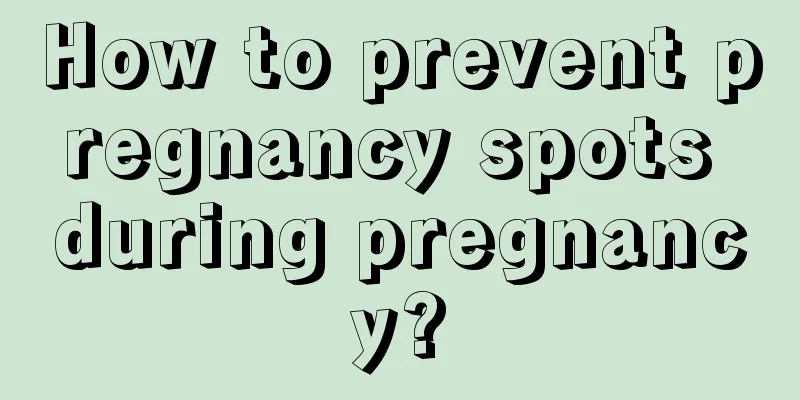What are the effects of a low placenta?

|
The position of the placenta is something pregnant women need to pay close attention to. If the placenta is located low, it will have an adverse effect on both the pregnant woman and the fetus. For pregnant women, a low placenta is likely to cause symptoms of vaginal bleeding, and for the fetus, a low placenta can also cause premature birth and affect its health. Below, we will introduce in detail the dangers, consequences and self-care methods of low placenta position. 1. The harm of low placenta position When the placenta is low, as the pregnancy progresses, especially in the late pregnancy or after delivery, the lower segment of the uterus gradually stretches, the cervical canal disappears, and the cervical opening dilates, but the placenta does not develop with the expansion of the cervical opening. As a result, it will detach from its attachment point, and blood vessels will rupture and vaginal bleeding will occur. When the amount of bleeding is heavy, the pregnant mother will develop anemia; when the bleeding is severe, she may go into shock and faint, and the baby in her belly may suffer from lack of oxygen, respiratory distress, or even death. Although this bleeding depends on the type of placenta previa, the chance of heavy, recurrent early bleeding is relatively low in low-lying placentas. However, during labor, each uterine contraction will pull the lower segment of the uterus upward, often causing increased bleeding and resulting in serious consequences. 2. Possible consequences of low-lying placenta At the same time, because the placental detachment surface of placenta previa is close to the external cervical os, bacteria can invade the placental detachment surface from the vagina. Coupled with postpartum anemia and weak physical condition, it is easy to get puerperal infection. Moreover, premature and perinatal mortality rates will also increase. Keep close observation and follow the instructions of the attending physician. Pay attention to rest, avoid overwork, and do not use excessive force when changing body positions, including when defecating. Avoid constipation and sexual intercourse. Go to the hospital immediately if you notice bleeding. 3. Self-care methods When a pregnant mother has a low-lying placenta, she should take appropriate self-care measures, but avoid all strenuous exercise, such as running, jumping, etc., and some actions are absolutely inappropriate. For example: squatting. You can choose a professional shoulder-style maternity support belt and use it when walking, doing general activities, or visiting the park. It can greatly relieve the burden on the abdomen and is very helpful for pregnant women with low placenta. Pregnant mothers already have a bulging abdomen, which puts a lot of pressure on their lower limbs, so it is not easy for them to squat. If a pregnant mother with a low-lying placenta squats, the cervix will expand and the placenta located lower will be stretched, causing detachment and bleeding. Therefore, pregnant mothers with low-lying placenta should never squat. |
<<: What does low fetal head position mean?
>>: How to sleep with a low placenta
Recommend
How much does a bottle of Want Want Coconut Milk cost? Is Want Want Coconut Milk delicious? How does it taste?
We all know that Want Want is a popular snack bra...
Can pregnant women eat yellow bean paste?
Pregnant women and their families are very aware ...
Pregnancy test paper strong positive turned weak positive
Generally speaking, women can get accurate result...
How to tell if it's menstrual bleeding or bleeding
Whether it is a boy or a girl, most people have s...
Why do women get acne below?
Women's private parts are sensitive and myste...
How to judge whether the uterus has recovered
The uterus is an important reproductive organ for...
What to do if the green radish withers in winter? How to water the green radish if it withers in winter
The green radish is a large evergreen vine native...
Care of Caesarean Section Wounds
Because of the fear of the pain of natural childb...
There are several possibilities for hcg weak positive
It is best to do a good job of physical examinati...
Is it normal for girls not to have dysmenorrhea?
After female friends reach adulthood, the physiol...
How to treat hyperemesis gravidarum? Experts tell you the scientific method
It is a common phenomenon for women to experience...
Is McDonald's Alexander Wang Black Gold Bucket delicious? How does McDonald's Alexander Wang Black Gold Bucket taste?
We all know that McDonald's launches new flav...
What is normal female leucorrhea like?
Every physiological manifestation of women can re...
How can women lose weight?
An obese body not only affects your appearance, b...
How does Western medicine treat breast hyperplasia?
Many female patients think that breast hyperplasi...









